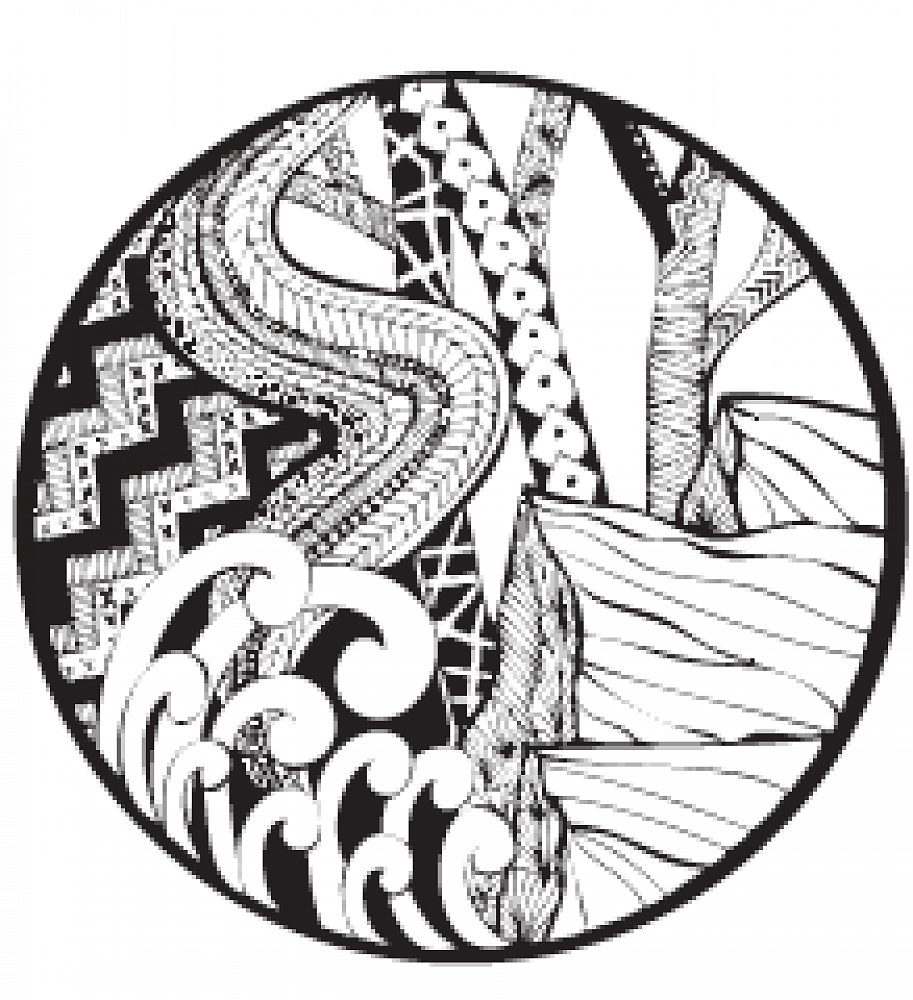
Cultural Narrative for Te Kura Tuatahi O Pakiaka/Woodend Primary School
Woodend is surrounded by water, forest and mountains. The landscape of Woodend and North Canterbury is the inspiration for this cultural story with the above montage on display throughout the school.
The waterways (Te Hapua and Te Awa) take children in year 0-2 and year 3-4 through the landscape until they get to the Forest (Te Ngahere) in year 5-6. The children emerge from the forest in year 6 (the woods’ end - the end of early Primary school) and in year 7-8 begin to climb the great heights of the Mountains (Te Maunga) as they prepare for secondary school and the beginning of the next chapter.
Te Hapua: The Lagoon
The safe, shallow waters of te hapua provide the perfect nursery conditions for aquatic life, and nesting sites for birds. Lagoons provide a haven for endangered species. They are a rich source of nutrients. They are constantly changing, and support biodiversity of flora and fauna. Hapua also have an important function as protectors against erosion, storms and floods. They are important to the overall ecosystem of the waterways, just as the junior area is important to the overall character and function of our school. This is where we prepare strong foundations and relationships with whānau, and ākonga. These are the years that our ākonga first learn to live and work by our school values and learn about our Intelligent Behaviours. They are nurtured and guided by our kaiako (teachers) as they develop socially, emotionally and academically. The bonds, relationships and foundations that are nurtured during these early years help to breathe new life into the school community, which in turn strengthens, protects and supports our learning ecosystem.
Associated wildlife/themes:
- Kete - basket
- Kōtuku - White Heron
- Pukeko (the area is highly populated by these birds)
- Harakeke
- Raupo - rushes
- Poaka - pied stilt
- Te Tawhiri
Te Awa:The River
In Māori culture water is likened to the lifeblood of Papatuanuku. Rivers support people, plants and wildlife, creating a nesting and feeding habitat for birds and other vulnerable wildlife. They are a source of mahinga kai (food gathering), hāngi stones and other valuable materials. They provide pathways across the landscape and represent continuity from maunga (mountain) to moana (ocean). Year 3-4 ākonga can be likened to te awa as they gain strength, purpose and direction in their learning. Rivers are in constant motion and change. The dynamic strength of Te Awa moves the river bed to form new shores (new learning), islands (pausing, reflecting) and routes (next learning steps). Te Awa and our ākonga are influenced by, and in turn, influence the landscape around them. Te awa tamariki move ‘nutrients’ (academic, physical and social skills, Growth Mindset and Intelligent Behaviours) as they gather momentum as ākonga, consolidating, pausing, surging and flowing into self-efficacy, raratiratanga, and a sense of self.
Associated wildlife/themes:
- Ruataniwha - Cam River at Kaiapoi
- Rakahuri - Ashley River
- Hurunui
- Waimakariri
Te Ngahere: The Forest
Forests are complex communities above and below ground. The strong roots of rakau (trees) protect the soil from eroding and reduce flooding. Fully mature trees protect and nurture new growth in the forest. Te Ngahere is host to a huge variety of manu (bird), mū (insect), and ngai tipu (flora). Forests are vital in producing oxygen for us to breathe. Traditionally te ngahere provided Māori with food, resources, and mana. Like the forest trees year 5-6 children have grown tall physically, emotionally and academically. They have learnt to support one another and have grown strong roots (values, IBs) that help them stand as individuals. They continue to grow and reach upwards, modelling behaviour and drawing on their learning and experience to inspire and guide younger students. Like te ngahere supports diversity of flora and fauna, this age group supports diversity of thinking, culture and learning styles. They are learning to be self-reflective,
Associated wildlife/themes
- Ōrākau - place of trees
- Ōtāpiri - place of vigorous growing shoot
- Ōtiria - place of planting
- Manuka/kanuka
- Karamu - coprosma
- Koromiko - hebe
- Tuauhou - silver eye
- Pīwakawaka - fantail
- Riroriro - grey warbler
- Korimako - bell bird
- Tui
- Tuarahonu - nursery web spider
- Tarata - lemonbalm
- Akeake
Te Maunga: The Mountain
Mountains were places where people experienced a sense of clarity and purpose and were considered tapu/sacred (Kai Tahu historian Te Maire Tau - 2000). Maunga were believed to be ancestors that linked the tangata to the land. Mountains (eg Maukatere) also provided a food gathering site for Kai Tahu. To climb a mountain you need to be supported and supportive, encouraging, courageous (Team Player). You must cultivate the right attitude (Growth Mindset, Logical Thinker, Self Manager: persistent, planned and organised). Our Inner Resources (culture, friendships, self-efficacy, self-belief, focus) help us to continue to climb when the going gets tough. Those at the top of the mountain help to create a pathway for others to follow. When we get to the top we can better see what lies ahead. We are stronger for the difficulty of our journey.
Associated wildlife/themes:
- Maukatere - Mount Grey
- Tawera - Mount Oxford
- Kuratawhiti - Torlesse Range
- Aoraki - Mount Cook
- Kā Tiritiri o te Moana - Southern Alps
- Maunga-mā - white mountain
- Maungatua - mountain of the gods
- Maunganui - large mountain
- Ōpiki - place of climbing
- Ōtara - place of the peak
- Puketoi - summit of the hill
Further Reading:
Historical Heritage… Pastoral…